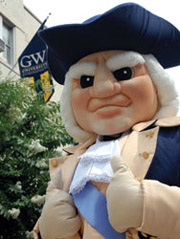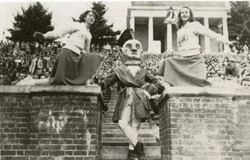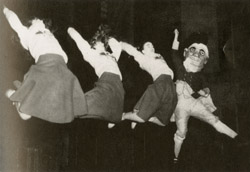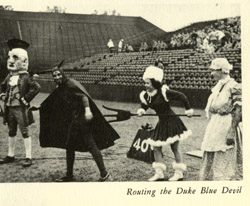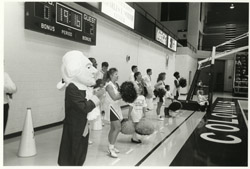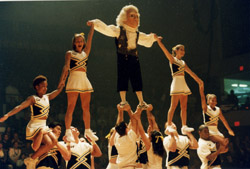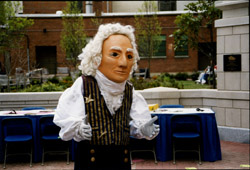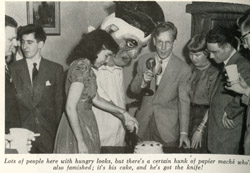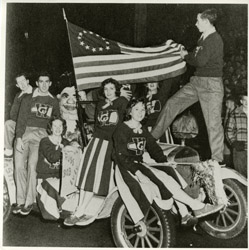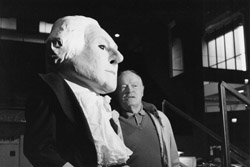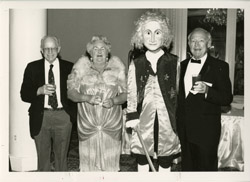Global MBA Program Infuses Ethics, Globalization Across Curriculum

An extensive marketing campaign accompanied the September launch of GW’s new Global MBA program, with eye-catching ads appearing in Washington’s Metro system, The Washington Post, The Economist, The Financial Times, and many other venues. Internationally acclaimed artist Jim Frazier was commissioned to create illustrations encapsulating the program’s vision, including this piece (above) depicting people united under the common cause of ethical business practice on a global scale.
Illustration by Jim Frazier
Who says you have to step on someone to get to the top? This fall, GW’s School of Business launched a Global MBA program where ethics and corporate responsibility take center stage. Based on preparing leaders with integrity for today’s global marketplace, the program is generating enthusiasm among students and the faculty..
“We believe that being a great business leader isn’t just about knowledge; it’s about character, and our new MBA program builds both,” says Susan M. Phillips, dean and professor of finance. “We spent the past year revamping the entire curriculum from the bottom up, weaving ethical decision-making, leadership, and globalization into every course.”
An outgrowth of the business school’s strategic plan, the Global MBA was fashioned by a 26-faculty member task force led by Murat Tarimcilar, associate dean for graduate programs and associate professor of decision sciences. “In the early stages, we talked to a lot of stakeholders—current students, alumni, corporate executives, recruiters, and others—to see what the market was looking for in an MBA candidate, and we consistently heard personal integrity and ethical behavior,” Dr. Tarimcilar recalls. “It came across clearly to us that the bottom line was no longer the only important thing. As a university, we felt obliged to step up and deliver a new kind of MBA emphasizing these core values.”
The roots of the program were planted in 2006 with the establishment of GW’s Institute for Corporate Responsibility directed by Timothy L. Fort, the Lindner-Gambal Professor of Business Ethics. “When Tim arrived at GW three years ago, he began working with our business faculty on ethics-based curriculum development,” says Dr. Phillips, a business ethics expert who chaired the 2004 ethics education task force for the Association to Advance Collegiate Schools of Business.
Dr. Fort and his team of professional business ethicists are closely involved with Global MBA students and professors, regularly visiting classes to discuss ethical issues and creating course-related, custom-designed videos detailing how to deal with ethical dilemmas. “Our students are constantly pushed to think about ethics,” Dr. Tarimcilar says. “For example, when we teach supply chain management, we include a case study on a supplier using child labor in a foreign country. The program is dedicated to training ethical leaders who will design organizations that bring the best out of people, not the worst.”
Like ethics, globalization spans the curriculum. A unique feature of the program is a mandatory, project-based, international residency under the guidance of faculty experts. “This year, we have groups going to El Salvador to work on a microfinance project, Vietnam for a manufacturing project, Spain for a strategy and marketing case, Turkey for a textile industry project, and India for a logistics project,” Dr. Tarimcilar says. “By working on real-world problems at overseas firms, our students will acquire a true understanding of the complex global marketplace.”
GW’s location makes it a natural home for the Global MBA, Dr. Tarimcilar adds. “We are surrounded by the World Bank, the IMF, the State Department, and many other powerful international organizations, giving our students access to the world’s best pool of global experts,” he says. “The World Bank Group has some 3,500 PhDs working on global issues, and we’ve already tapped a few of them to teach some of our 150 specialized electives.”
Market response to the Global MBA has been positive, Dr. Tarimcilar says. “E-mails have been flowing in from around the world expressing excitement about what we are doing, inquiries are up 400 percent compared to last year, and average GMATs for our first-year MBA students rose to an all-time high of 643, representing a 25 point increase over last year,” he says. “It’s been a real blue sky scenario, and it’s only up from here.”
—Jamie L. Freedman
Record Gift Will Advance GW Cancer Research
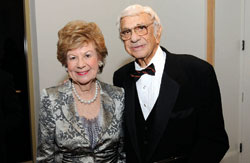
Cyrus and Myrtle KatzenIn what represents the largest gift from one family ever to The George Washington University and its Medical Center, Cyrus and Myrtle Katzen have committed $10 million to advance a wide range of cancer initiatives.
“I am deeply grateful for this historic leadership gift from a native Washingtonian family that has been personally affected by this devastating disease,” says GW President Steven Knapp. “The Katzens’ generosity will greatly accelerate our ability to conduct the kind of research that can truly make a difference to cancer prevention and treatment.”
The gift will establish The Dr. Cyrus and Myrtle Katzen Cancer Research Center, enhancing recruitment of top scholars in the field and development of innovative approaches to battling and treating cancer.
It is the latest expression of close and long-standing ties between the Katzens and GW. Six members of the Katzen family have attended GW, including four who earned medical degrees. In addition, the Katzens have given more than $1.3 million to the University over the years, primarily in support of the Medical Center and the GW Cancer Institute. Dr. Katzen often has spoken of the high quality of care his first wife, Sylvia, received at GW Hospital during her 10-year battle with cancer. She died in 1980.
The gift is the second of its size since Knapp took office last year. An eight-figure donation in February from the Robert H. Smith and Charles E. Smith Family Foundations and Robert P. and Arlene R. Kogod came in the form of a $10 million matching challenge to renovate the Charles E. Smith Center.
“Charles E. Smith was a close friend and business associate and I’ve had the pleasure of working with his son Robert Smith, and son-in-law, Robert Kogod, over the past couple of decades,” Dr. Katzen says. “Myrtle and I were inspired by their generosity, and like them, we wanted to give back to an institution that is so central to the vitality of our nation’s capital.”
Robert Siegel, MD, professor of medicine and director of the Division of Hematology/Oncology, will chair the board of directors to be established on behalf of The Dr. Cyrus and Myrtle Katzen Cancer Research Center.
Cyrus Katzen is the owner and president of Mozel Development Corp. and Culmore Realty Co. Tysons Corner and Crystal City in Virginia are among the many properties he has helped develop. He also has had successful careers in banking and dentistry. He holds a degree in dentistry from Georgetown University and is known for inventing an automatic processing system for medical and dental X-ray film.
Class of 2012 a Multicultural Mix
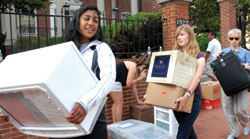
Members of the Class of 2012 move into their residence halls before the start of fall semester.
Jessica McConnell
The George Washington University welcomed one of its most academically talented and diverse classes ever this fall.
The Class of 2012—comprising 2,450 students—includes a record-breaking number of minorities and more international students compared with recent years. “In 2003, we had 175 African American and Latino students in our freshman class; this year we have 360—more than double,” says Kathryn Napper, executive dean for undergraduate admissions. “The class is also much more international in scope, with 159 students hailing from 47 countries around the globe. Particularly after the post-9/11 decline in international students, we’re pleased to see more interest in GW from overseas.”
Napper attributes much of the increase in diversity to the University’s targeted outreach efforts. “I’m particularly proud of our Dean’s Council for Multicultural Recruitment, which includes some 80 GW student volunteers who work hard at recruiting because they want to make a difference,” she says. “This is the council’s fourth active year, and our multicultural numbers are continuing to rise.”
The largest numbers of international students hail from South Korea (55), China (24), and Turkey (nine). Incoming freshmen also represent every state in the United States, except North Dakota and Wyoming, with the most sizeable groups coming from New York, New Jersey, Massachusetts, California, and Pennsylvania.
“We’re particularly pleased to welcome 195 engineering students—one of the largest freshman engineering classes in recent history,” Napper adds.
Beyond academic excellence, the Class of 2012 is an accomplished group, marked by wide-ranging talents. Fortes range from dog sled racing to underwater videography, unicycling to metaphysics. Thirty-eight percent of the class speaks a language other than English fluently.
—JLF
Students Organize Scholarship for Sudan Refugee
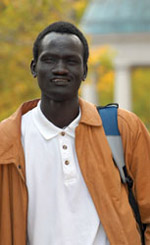
Student organization Banaa coordinated a full scholarship at GW for Makwei Mabioor Deng, a refugee from Sudan. Banaa, which is Arabic, means to create or build.
Jessica McConnell
Makwei Mabioor Deng has experienced culture shock like few other freshmen.
The 22-year-old who spent 16 years in a refugee camp after fleeing his village in war-torn southern Sudan is now acclimating to American college life—from learning how to search books in a library to discovering the basics of indoor plumbing.
Deng, who arrived at campus this fall, was awarded a full scholarship at The George Washington University with help from administrators and the devoted efforts of several GW student activists who believe that education is a key to creating long-term change. Student organization Banaa, the Sudan Educational Empowerment Network, has coordinated the scholarship for Deng so that he may earn a higher degree. But the grant comes with a remarkable responsibility: After he completes his education, Deng must return to his native Sudan to work in public service promoting peace. The organization’s aim is to arm him with the knowledge to lead.
“I see this as an opportunity for me to further my education,” Deng says, “but also to help myself, my people, and my country.”
Banaa, which started from a GW student group to protest the genocide in Darfur and raise awareness about the plight in Sudan, has grown into a pragmatic network of college students across the nation promoting sustainable social change. Founded by Justin Zorn, BA ’08, Jeff DeFlavio, BA ’08, and other GW students, Banaa maintains a database of survivors and refugees of Sudan with the goal to match them with university scholarships and empower them with the skills to address the complex conflicts of their homeland.
“Banaa.org is an attempt to empower Sudanese nationals who grasp the conflict’s complexity and nuance,” DeFlavio says. “We aim to support individuals who are best suited to address the roots of violence in the region.”
The organization now has chapters on 35 campuses across the country and has attracted such prominent supporters as former secretary of state Madeleine K. Albright. In September, it received an award from the Clinton Global Initiative, a non-partisan program that promotes global action.
Encouraged by Banaa’s effort, other schools are now stepping up to the task. Tufts University and Vassar University have begun reviewing applications of potential Banaa scholars, and Mills College and the College of Idaho have already made financial commitments to the program, says Zach Hindin, a GW junior and Banaa organizer. There are more than 150 qualified Sudanese applicants in the organization’s database.
Deng is the first Banaa scholar and an ambassador for a program that he says has given him an unprecedented opportunity. Just a few months ago Deng was living in Kakuma refugee camp in Kenya, where life was difficult and college nearly impossible to imagine. He arrived on GW’s campus having never seen a microwave oven or a washing machine, and was led around town by Banaa organizers who taught him everything from how to order food at a restaurant to opening his residence hall door with an ID card.
In class, though, Deng feels at home. Deng has always thrived in school, and at the refugee camp he earned top marks at a Jesuit secondary school. Having no means to attend college, Deng began teaching at the camp while searching for scholarships. He never dreamed his efforts would take him to a U.S. university—but here he is, living in a residence hall on the Mount Vernon campus and spending long hours studying, determined to excel. An economics and international affairs major, Deng aspires to go to law school so that he may bring back to Sudan the underlying tenets for a constitution that supports a fair and impartial judicial system. An effective legal structure, he says, will help solve problems outside of the battlefield.
Hindin says Deng stood out from other applicants because of his passion for learning and his commitment to change.
“He had a real, articulate, and demonstrated desire to go back and use what he has learned,” Hindin says. “GW is really integral to this because of its connection to the city and policy makers who work on peace development.”
From Capitol Hill to campus classes, Deng still needs a map to navigate the city streets. But in life, Deng knows where he is going, and he says GW is helping him find his path.
—Jaime Ciavarra
Helping Wheels
 Jessica McConnell
Jessica McConnell
Thanks to its first-ever ambulance, GW’s Emergency Medical Response Group (EMeRG), is now able to transport patients directly to the hospital. For more than 12 years, the student-based volunteer organization has offered round-the-clock emergency medical care to students, faculty, staff, and neighbors of the University’s Foggy Bottom Campus. On Sept. 11, University Police Department Chief Dolores Stafford and EMeRG’s 70-member staff celebrated the addition of a basic life support ambulance to their team.
EMeRG can now treat more patients and provide them with free transportation to the hospital. The new ambulance enables EMeRG staff to transport patients directly to the hospital instead of waiting for a city ambulance, saving both time and money.
GW Launches Solar Analysis Institute

Solar module installed in Dimbach, Germany
Blitzstrom/Beck Energy
As soaring energy prices and environmental challenges cast dark clouds over much of the world, the sun offers enduring solutions. This fall, The George Washington University positioned itself as a global leader in the fast-growing solar power field by launching the interdisciplinary Institute for the Analysis of Solar Energy. The institute focuses on the economic, technical, and policy issues associated with developing and deploying solar power to meet global energy needs.
The scholarly institute will engage faculty members and graduate students across the University, including those in business, economics, engineering, geography, public policy, public administration, and chemistry, in collaborative research projects. The institute was established within the Columbian College of Arts and Sciences through a combination of private, corporate, and foundation funds, including support from media mogul and environmentalist Ted Turner.
“The new institute will draw on the expertise of our faculty and the advantages of our location in the heart of the public policy community,” GW President Steven Knapp says. “Its creation illustrates the University’s commitment to play a leading role in informing the national conversation on alternative sources of energy.”
According to Peg Barratt, dean of Columbian College of Arts and Sciences, “GW’s researchers will concentrate on questions beyond analyzing the science of solar energy generation to exploring its many unanswered questions, such as how to transmit energy across the nation, what possible cost scenarios could look like, and how to meet the demands of peak power times.” Dean Barratt led the way as the institute quickly developed from an alumnus-generated idea in February 2008 to a $2.5 million funded, one-of-a-kind enterprise by the fall.
The institute generated its first set of research proposals in September. Highlights include analyzing solar deployment issues such as intermittency, when the sunlight is interrupted by cloud cover; solar cost analysis and comparison with traditional energy sources; and new storage and fuel methods using solar.
“We’ll be examining solar’s possibilities, the roadblocks, the policy, and related issues,” Dr. Barratt states. “We’re building the resources to provide trusted, scientifically sound information and analysis of solar energy to assist our nation’s policy makers as they develop our country’s energy policy.”
Spearheading the effort is international solar expert Ken Zweibel, executive director of the institute, who has served as a solar industry leader for the past three decades. “In the next 15 years, the United States can substantially reduce its dependence on foreign oil, as well as its carbon emissions, by using solar as a major part of its energy supply, and our new GW institute is committed to drafting that roadmap,” he says.
Zweibel comes to GW from PrimeStar Solar Inc. in Golden, Colo., a solar power manufacturing company he co-founded. He previously worked for 27 years at the Department of Energy’s National Renewable Energy Laboratory Solar Program in Colorado, where he headed up efforts to develop solar technology for low-cost electricity. Zweibel is the author of two books and numerous articles on solar energy, including “The Solar Grand Plan,” published in the January 2008 edition of Scientific American. The ambitious plan calls for the installation of solar panels over vast areas of land in the sun-rich Southwestern United States, the construction of high-voltage, direct-current power distribution lines to transmit the solar electricity across the country, and the transition of transportation to plug-in electric hybrids to use the new carbon-free energy.
“There is a real sense of urgency about energy and environmental challenges,” Zweibel says. “The increased price of conventional energy suggests we revisit alternatives. This institute—fueled by the tremendous knowledge base at GW—will help contribute to that re-examination.”
“The Institute for the Analysis of Solar Energy has a perfect home here at GW,” Dr. Barratt concurs. “It gathers experts in many fields, joins faculty and students in collaborative research, and puts trusted information about solar energy before a large group of stakeholders here in D.C. and around the world.”
—JLF
Greek Life: 150 Years and Thriving
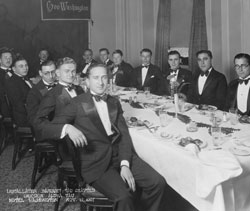
GW fraternity members at the 1927 installation banquet for Omicron Alpha Tau, held in the Hotel Washington
Greek life at GW is enjoying a resurgence in popularity, as the tradition-steeped community celebrates its 150th anniversary on campus. In the past five years, GW’s Greek population has grown by nearly 50 percent—from 1,200 members to 1,780—and five fraternities and sororities have established new chapters at the University, bringing the total number of Greek-letter groups to 34.
“We’ve been experiencing incredible growth and anticipate that some 2,000 students—more than 20 percent of our undergraduate population—will be members of fraternities and sororities this fall,” says Dean Harwood, GW’s director of Greek Life. He adds that two chapters will be returning to Foggy Bottom this year after a long hiatus—Chi Omega and Delta Tau Delta. “Both were originally established here in 1903,” he says.
GW’s Greek history dates back to 1858, when Sigma Alpha Epsilon fraternity established the Washington City Rho chapter on campus. The pioneering group is famous for being the sole chapter of the fraternity to survive the Civil War. The University’s first sorority, Pi Beta Phi’s DC Alpha chapter, was chartered in April 1889—the first academic year that women were admitted to the University. By the end of the 19th century, GW was home to nine fraternities and sororities.
Greek life was a pivotal part of GW’s social scene in the 1920s and 1930s, with formal, black tie dances held at Washington’s most elegant venues, including the Mayflower and Willard Hotels.
Membership ebbed in the 1960s and 1970s, in the wake of the Civil Rights movement and Vietnam War, and regained momentum in the 1980s. “The late 1970s brought multicultural fraternities and sororities to campus,” Harwood says. “Today, we have four African-American groups, four Asian groups, and two Latino groups at GW.”
Through the years, a number of notable GW students have participated in Greek life. Margaret Truman Daniel, BA ’46, the daughter of U.S. President Harry S Truman, was a member of GW’s Pi Beta Phi chapter and routinely took several sorority sisters home to the White House for Sunday dinner. J. Edgar Hoover, LLB ’16, the powerful director of the FBI for 48 years, served as president of GW’s Kappa Alpha order and reportedly hired a number of fraternity brothers as key employees in his early days at the FBI. Michael B. Enzi, BBA ’66, U.S. senator from Wyoming, was a member of GW’s Sigma Chi chapter and roomed with fraternity brother Edward W. (Skip) Gnehm Jr., BA ’66, MA ’68, a three-time U.S. ambassador who now serves as GW’s Kuwait Professor of Gulf and Arabian Peninsular Affairs.
To accommodate the increasing Greek presence on campus, the University built Townhouse Row, a full block of townhouses for fraternities and sororities on 23rd Street between F and G Streets, in 2003. Five smaller, University-owned townhouses also are home to Greek-letter groups, along with all nine floors of International House on Virginia Avenue.
“A large driver of our growth is the fact that we have high quality chapters at GW and our students are getting a great, balanced experience,” Harwood says. “Some of our chapters received awards this summer for being among the top groups in their organizations in the country.”
According to Harwood, fraternity and sorority members at GW raise more than $160,000 annually for charity, perform thousands of hours of community service, and hold leadership positions in myriad student organizations. “Their membership in Greek organizations accentuates their GW experience in a way that connects them to the entire community,” he states. “To me, it’s one of the legacies of GW that’s helped to tie things together for 150 years.
—JLF
Major Grant Will Improve Community Health Care
The George Washington University Medical Center received a $5 million grant to serve as the national program office for the Robert Wood Johnson Foundation’s latest commitment to improving health care in the United States. The “Aligning Forces for Quality” initiative is the largest effort of its kind ever undertaken by a U.S.-based philanthropy. Aligning Forces currently includes 14 communities across the country, some representing major metropolitan and rural areas, and others representing entire states. The goals of the program are for these communities to improve health care in ways that are equitable, patient-centered, and sustainable over time.
Bruce Siegel, research professor and director of the Center for Health Care Quality in GW’s Department of Health Policy in the School of Public Health and Health Services, will serve as the director of the program.
As part of this commitment, GW’s Department of Health Policy will coordinate the overall program, and provide expert advice and support to the leadership teams and to doctors, hospital health plans, and others in each community. Some of the assistance and resources provided by GW will continue efforts already funded by RWJF, such as the Health Information Law Project, which conducts and releases analyses on legal barriers to efforts to improve health care.
For more information about the Aligning Forces initiative, visit www.rwjf.org/qualityequality.
Renowned Aerospace Expert to Lead Engineering School
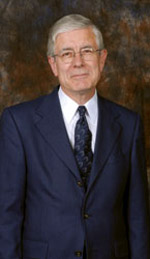
David S. Dolling, an expert in supersonic and hypersonic fluid dynamics, joined GW as dean of the School of Engineering and Applied Science after serving in several roles at the University of Texas, Austin.
Jessica McConnell
David S. Dolling traces his love of flight to building model airplanes and watching air shows as a child growing up in England. When a teenager, he joined the Royal Air Force Cadets, a program that enables young people to learn firsthand about aviation, and the rest was history. “I became fascinated by the engineering and science behind flight—it’s fair to say that the fascination has never left me,” says Dr. Dolling, who started as dean of GW’s School of Engineering and Applied Science on Sept. 1.
Dr. Dolling comes to GW with a wealth of qualifications. Most recently, he served as associate dean for academic affairs, Joe C. Walter Jr. Chair in Engineering, and professor of aerospace engineering and engineering mechanics at the University of Texas, Austin. Dr. Dolling is a fellow of both the American Institute of Aeronautics and Astronautics and the United Kingdom’s Royal Aeronautical Society, has held a number of leadership positions in the American Institute of Aeronautics and Astronautics, and was appointed to the Engineering Accreditation Commission.
While Dr. Dolling spent the past 25 years at the University of Texas, he says the decision to come to GW was an easy one. “I was attracted by the combination of existing GW qualities and by the clear potential that the School of Engineering and Applied Science has to play a larger role locally and on the national stage,” Dr. Dolling says. “The motivation, energy, and enthusiasm of the students and faculty played a crucial role, as did the proximity to government, industry, and the high-tech corridor in Northern Virginia.
“A commitment has been made at the highest levels of GW to strengthen the School of Engineering and Applied Science,” he adds. “An opportunity to play a leadership role in that endeavor is very exciting.”
Although Dr. Dolling says it is too soon for him to have formed highly articulated objectives, his preliminary goals for the school include strengthening and expanding its undergraduate and graduate offerings, making it an increasingly attractive education and research destination for students, taking full advantage of the Virginia Campus, and forging more research collaborations with industry, government, research institutes, and other schools.
Dr. Dolling’s research concerns supersonic and hypersonic fluid dynamics. He currently is the principal investigator on a five-year, $5 million program sponsored by the U.S. Air Force on scramjet propulsion technologies. One of the long-range outcomes of his research could be less expensive access to space, he explains. “Vehicles are now propelled into space by rockets, which, because they carry both fuel and an oxidizer, tend to be large and heavy.” In contrast, a scramjet-propelled vehicle would only carry fuel. “One advantage is that such vehicles could be much lighter, allowing more payload to be carried into space,” he says.
Earlier in his career, Dr. Dolling developed a high-speed wind tunnel laboratory at the University of Texas and built an internationally recognized research program in experimental gas dynamics. Before joining the University of Texas in 1983, Dr. Dolling spent six years as a researcher and lecturer at Princeton University. He earned both an undergraduate and Ph.D. degree from London University and spent three years studying at the Von Karman Institute for Fluid Dynamics in Brussels.
—Rachel Muir
George Welcomes…
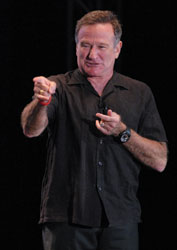
Actor and comedian Robin Williams gave two sold out side-splitting performances at the Charles E. Smith Center on Oct. 17 and 18 as headliner of Colonials Weekend.
Jessica McConnell
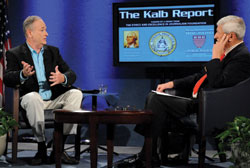
Fox News host Bill O’Reilly stepped out of the “No Spin Zone” and joined Marvin Kalb on Sept. 27 to discuss journalism, commentary, and The O’Reilly Factor, on The Kalb Report. The program is a partnership between GW, The National Press Club, and Harvard University.
Jessica McConnell
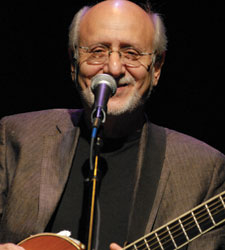
Peter Yarrow of Peter Paul and Mary performed such hits as “Leaving on a Jet Plane” during an Alumni Weekend performance at Lisner Auditorium Sept. 26.
Jessica McConnell
|
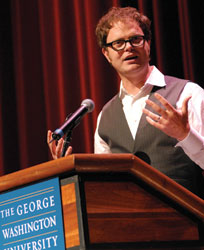
Rainn Wilson, an actor on the TV show “The Office,” promoted the Tahirih Justice Center during a talk at Lisner Auditorium during Alumni Weekend in September. The center advocates for women and girls who have experienced gender-based violence and discrimination.
Jessica McConnell

Award-winning actress Kerry Washington, BA ’98, spoke about her career and her time at GW during an Alumni Weekend event at Betts Theatre Sept. 27. Washington also was honored with a 2008 Recent Alumni Achievement Award. Read more about Washington in the Spring 2009 edition of GW Magazine.
Julie Woodford
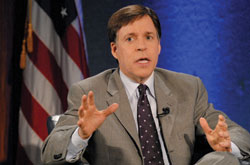
Legendary sportscaster Bob Costas gave a play-by-play account of the future of sports journalism during GW’s partnership programs, The Kalb Report at The National Press Club on Oct. 13.
Jessica McConnell
|
Virginia Campus Houses Grants Library
Grant seekers in the Washington metropolitan area have a wealth of free print and online resources at their fingertips, thanks to the recent designation of the GW Virginia Campus Library as a Foundation Center Cooperating Collection.
As a member of the Foundation Center’s nationwide network, the Virginia Campus Library provides visitors with free access to grant-maker directories, books on writing grant proposals, and select electronic databases maintained by the Foundation Center, an organization whose mission is to strengthen the nonprofit sector by advancing knowledge about U.S. philanthropy. The center collects information from U.S grant makers—including private foundations, corporations, and grant-making public charities—and shares it with grant-seeking nonprofit organizations via reference materials and comprehensive databases.
The center’s Foundation Directory Online contains more than 92,000 profiles of current U.S. grant makers, their interests, grant requirements, and deadlines. A second database, Foundation Grants to Individuals Online, provides information about research funding, scholarships for prospective students, and individual grants for artists and writers. Accompanying the databases is a print collection containing an up-to-date selection of the Foundation Center’s publications.
As a Foundation Center facility, the Virginia Campus Library also provides a variety of supplementary materials and services to grant seekers on proposal writing, philanthropy, fundraising, and nonprofit management, and offers free seminars and workshops.
Kathleen M. Burke Named CPS Dean
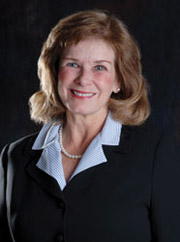
Jessica McConnell
Kathleen M. Burke, a literature scholar with a distinguished academic and corporate background, was named dean of GW’s College of Professional Studies in October.
Before coming to The George Washington University, Dr. Burke was a higher education consultant with IBM Corp. She previously served as dean of Trinity University’s School of Professional Studies; assistant vice president for adult and continuing education at Marymount University; founding dean of Georgia Southern University’s Division of Continuing Education and Public Service; as well as associate dean of undergraduate studies at the University of Maryland, College Park.
“Kathleen Burke’s experience and demonstrated leadership in continuing education make her a perfect fit for GW’s College of Professional Studies,” President Steven Knapp says. “She brings to the University a keen understanding of both higher education and the business community. These attributes will serve to advance the college’s reputation among the region’s working professionals who seek superior programs in sought-after fields of study.”
Burke replaces former dean Roger Whitaker, who is now on sabbatical, and professor Ali Eskandarian, who has been serving in an interim capacity.
Dr. Burke says she is poised to contribute to the outstanding quality of the College of Professional Studies, which offers undergraduate and graduate programs that address the competency requirements of adults working in emerging and rapidly changing professions.
“Today’s professionals want universities to provide professionally delivered curricula and support systems that meet their needs,” Dr. Burke says. “The College of Professional Studies will continue to enhance learning opportunities for a diverse array of professionals who engage the University as nontraditional students. In so doing, we will enrich our students, our region, and our nation.”
Dr. Burke is a member of many professional and academic organizations, including the University Continuing Education Association, where she previously served on its board of directors. She graduated from Loyola College with an undergraduate degree in English. She received her Master of Arts in English language and literature from Oxford University and earned her PhD from the University of Maryland, College Park. Her doctoral specialization is Modern British Literature.
Residence Halls Go Eco-Friendly
In an effort to tap into the greener side of city living, GW registered two new residence halls under construction with the U.S. Green Building Council, the entity that oversees LEED (Leadership in Environment and Energy Design) green building ratings. The residence hall on F Street, scheduled to open in August 2009, is targeted for “Silver” LEED status. Pelham Hall redevelopment on GW’s Mount Vernon Campus, scheduled to open in August 2010, is targeted for “Certified” LEED status. Green features at these projects include: an Energy Star white roof to reflect sunlight and reduce urban heat; use of native plants to reduce irrigation; recycling of construction waste; and low flow toilets that reduce water consumption by more than 30 percent.
Sustainability has become a major priority for the University. While these two buildings are the first to meet the LEED benchmarks for high performance green buildings, the University first began instituting green building practices in 1997 during construction of New Hall. For more information on GW’s sustainability efforts, visit http://sustainability.gwu.edu.







